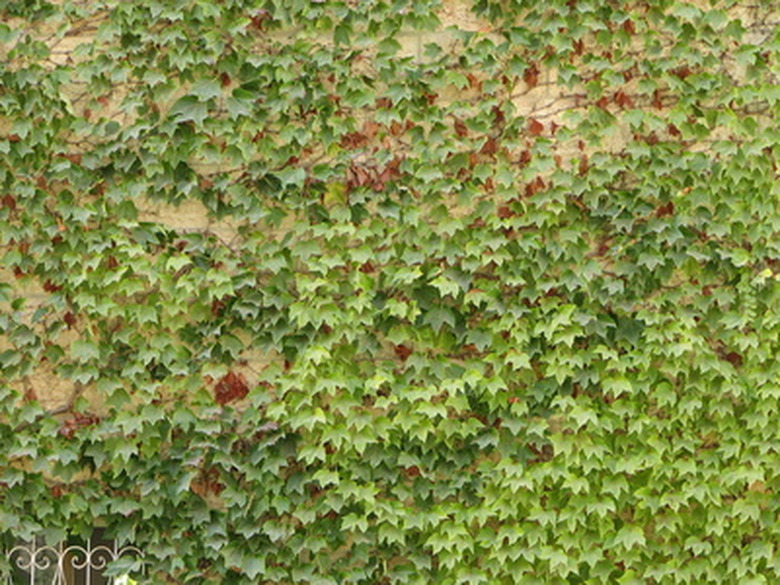Ivy Plant Diseases
Ivy is used as a ground cover, climbing vine and even as a houseplant. An evergreen, there are a number of ivy varieties, including English, Boston and Swedish. Although ivy is a hardy plant that withstands urban pollution and shade, the plant is susceptible to both bacterial and fungal infections.
Bacterial Leaf Spot
The bacterium Xanthomonas campestris causes bacterial leaf spot, or bacterial blight. Weakened ivy plants in shady areas experiencing prolonged wet weather conditions or ivy that is watered from overhead are susceptible, according to the Alabama Cooperative Extension. The bacterium enters through a wound or natural opening on the plant. Constantly wet ivy leaves are especially prone to bacterial leaf spot. Symptoms include dark angular patches on the leaves that look water soaked. The patches later turn brown and a yellow ring forms around the spot. Ivy stems will whither and die.
- Ivy is used as a ground cover, climbing vine and even as a houseplant.
- Constantly wet ivy leaves are especially prone to bacterial leaf spot.
To prevent bacterial leaf spot, avoid watering ivy from overhead. Keep plants healthy by adhering to a regular fertilization schedule. Thin the plants to increase air circulation between plants. Remove and destroy affected plants. Plant disease-resistant ivy.
Botrytis Blight
Ivy plants can develop botrytis blight, or gray mold, caused by the fungus Botrytis cinerea, according to the Mid-Florida Research & Education Center. Fungal spores develop on decaying plant material in damp conditions. The spores spread by either the wind or by rain splash. Symptoms include the appearance of a fuzzy, gray mold causing dead and discolored patches to appear on the stems and leaves of the ivy plant. In severe cases, the upper parts of the stem, and eventually the plant itself, dies.
- To prevent bacterial leaf spot, avoid watering ivy from overhead.
- Symptoms include the appearance of a fuzzy, gray mold causing dead and discolored patches to appear on the stems and leaves of the ivy plant.
To treat, remove dead and decaying ivy plants. Thin the plants to improve air circulation. Avoid watering the ivy from overhead. Spray a fungicide suitable for use against botrytis blight.
Phytophthora Root Rot
The fungus Phytophthora causes Phytophthora root rot. The spores form on infected plant material in waterlogged soil, and then swim through the soil and attack the roots of ivy plants. Symptoms include patches of dead tissue on the stems, yellowed and wilted leaves on the top of the plant and brown and curled basal leaves on the underside of the plant, according to the University of Georgia Cooperative Extension. The roots also die back. In extreme cases, the plant dies.
- To treat, remove dead and decaying ivy plants.
- Thin the plants to improve air circulation.
To prevent, avoid overwatering and over fertilizing. Improve drainage by adding gypsum or sand to the soil. Remove and destroy all affected plants. Plant disease-resistant varieties of ivy. To treat, apply fungicides specifically for the treatment of root rot.
